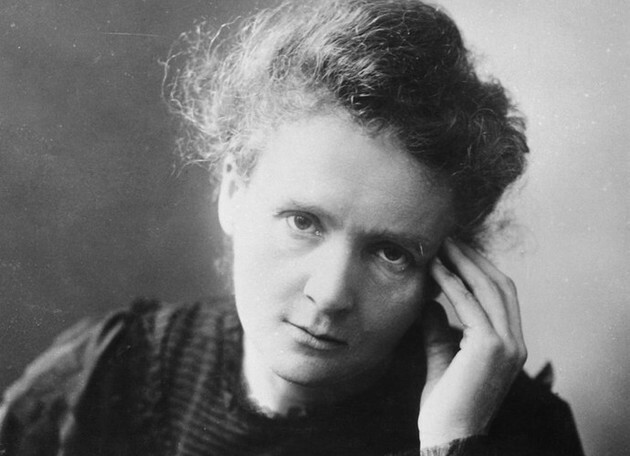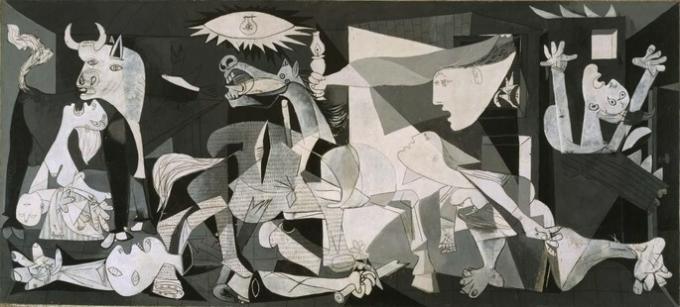Frida Kahlo she was one of the most important Mexican painters of the 20th century, and stood out for being a unique artist. With a very autobiographical production, Frida portrayed personal themes and anxieties.
However, her work ended up communicating and inspiring many women, so that the artist became a symbol for the feminist movement.
Although she had a very troubled life, from health and relationships, she had a revolutionary spirit and militated in the Mexican communist party. She fought for women's rights and highly valued the indigenous culture of the Andean people, being also a reference in Latin American culture.
Biography of Frida Kahlo
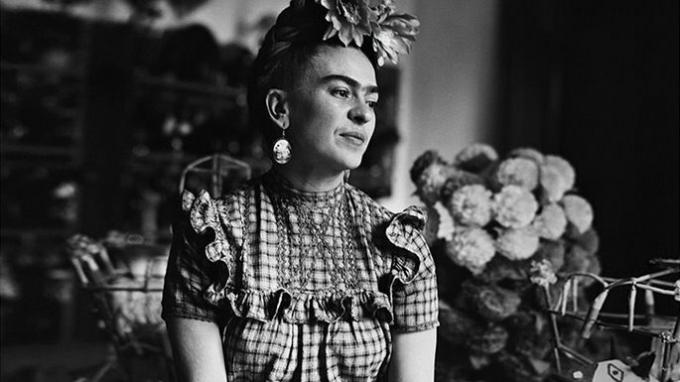
Magdalena Carmen Frieda Kahlo y Calderón, better known by her artistic pseudonym, Frida Kahlo, was born in the small village of Coyoacán, near Mexico City, on July 6, 1907.
Frida was the daughter of Guillermo Kahlo, a photographer of German origin, who has always inspired and encouraged his daughter to embark on the artistic scene. Her mother, Matilde Gonzalez y Calderón, was an extremely Catholic woman and had Indian and Spanish descent.
Since childhood, the painter had a life marked by illnesses. At the age of six, he develops polio, which leaves him with a sequel to his foot. Because of this, Frida starts to wear long pants and, later, long colorful skirts, which will be her trademark.
At the age of 18, she suffers a serious tram accident, a tragic moment and, at the same time, a renovation. This is because when she is unable to walk normally, she begins to paint pictures, and from then on focuses on her career as a painter.
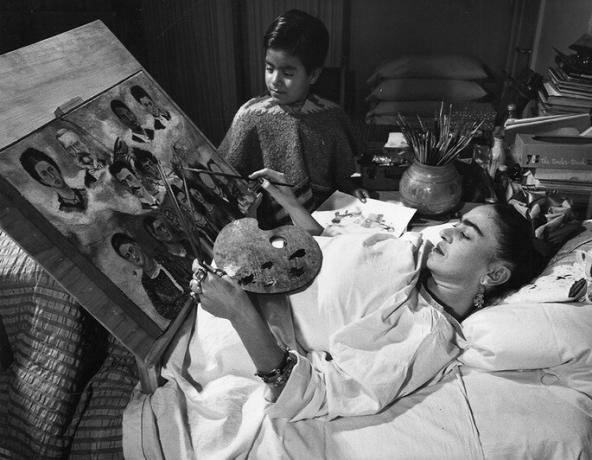
Later, in the last years of her life, in 1950, Frida is forced to amputate her leg. This fact causes her great depression. Because of this event, the artist said the well known phrase: "What do I need feet for when I have wings to fly?".
Her training took place at the “National Preparatory School of the Federal District of Mexico”. There she studies subjects related to art and philosophy and knows Diego Rivera (1886-1957), a great representative of Mexican muralism, with whom she would have an intense and passionate married life.
In 1928, she joins the Mexican Communist Party, and the following year, when she was 22, she marries Diego. At the time, he was 41 years old.
The couple moves to Casa Azul, now a museum dedicated to the artist. For 3 years, they lived together in the United States in the cities of Detroit, San Francisco and New York.
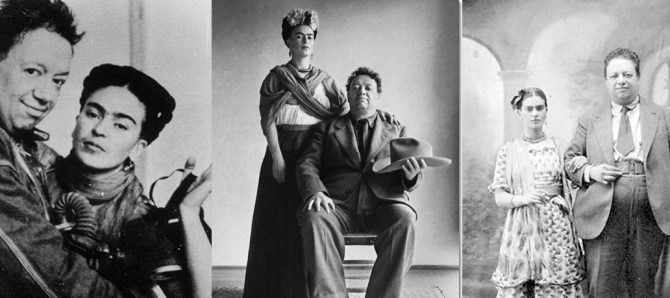
Frida and Diego have a complicated relationship, and Frida separates after discovering that her husband had a romantic relationship with her younger sister, Cristina Kahlo, with whom she had several children.
It was at this time, in 1939, ten years after the marriage, that Frida says:
Diego, there were two big accidents in my life: the tram and you. you were without a doubt the worst of them.
In addition to being an artist, Frida taught painting classes at the National School of Painting and Sculpture “A Esmeralda” (La Esmeralda), in Mexico City.
Throughout her life, her work has been recognized worldwide and she has exhibited several works in some museums:
- Julien Levy Gallery, in New York (1938);
- Galerie Renou et Colle, in Paris (1939);
- Inés Amor Mexican Art Gallery, in Mexico City (1940);
- Lola Álvarez Bravo Contemporary Art Gallery (1953).
Frida's death
Resulting from severe pneumonia or pulmonary embolism, Frida died on July 13, 1954, aged 47. Although many believe that she committed suicide, the following sentence was found in the artist's diary:
I look forward to my departure - and I hope I never return.
Curiosities about Frida Kahlo
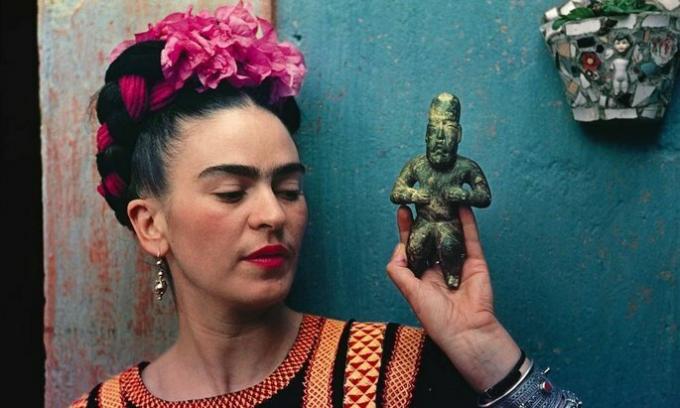
- Frida had a hidden romance with the Marxist intellectual and leader of the Russian Revolution Leon Trotsky (1879-1940).
- Frida Kahlo was bisexual.
- The artist tried to commit suicide several times and suffered 3 miscarriages during her life, as the accident that perforated her uterus and hit her spine prevented her from being a mother.
- Some scholars believe that Frida, found dead in her home, was poisoned by one of her husband's lovers.
- The film frida (2002), directed by Julie Taymor, tells the story of the painter.
Characteristics of Frida Kahlo's Works
Frida's works carry a unique style and narrate much of her life, being a form of expression and healing.
The Mexican national identity stands out, based on themes of popular culture and indigenous folklore, permeated with strong and vibrant colors.
André Breton (1896-1966) and Salvador Dali (1904-1989) classified Frida Kahlo's work as surrealist.
However, the artist, who did not consider her works to be surreal, declared:
I never painted dreams. I painted my own reality.
Frida focused on transforming her feelings into art, in a way that we find reflected in her work several moments of her life. According to her:
Painting completed my life. I lost three children and a host of other things that would have filled my dreadful life. My painting took the place of all that. I believe working is the best.
Works by Frida Kahlo
Self-portrait in a velvet dress (1926)
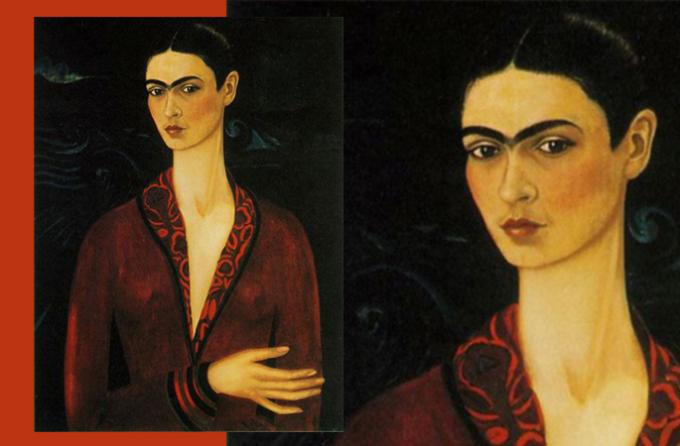
Portrait of my sister Cristina (1928)

The bus (1929)
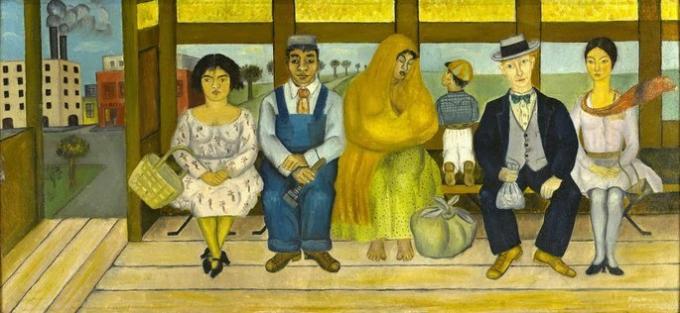
Frida and the Caesarean (1931)
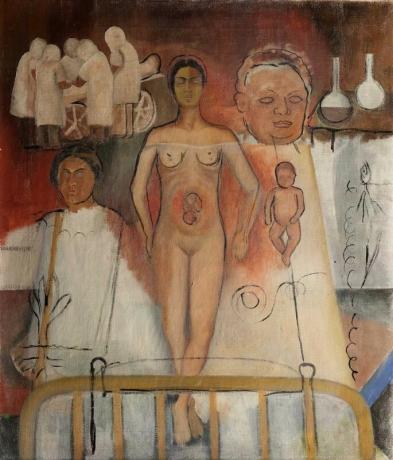
My birth (1932)

Henry Ford Hospital (1932)

The Two Fridas (1939)

Diego in my thought (1943)

The Broken Column (1944)
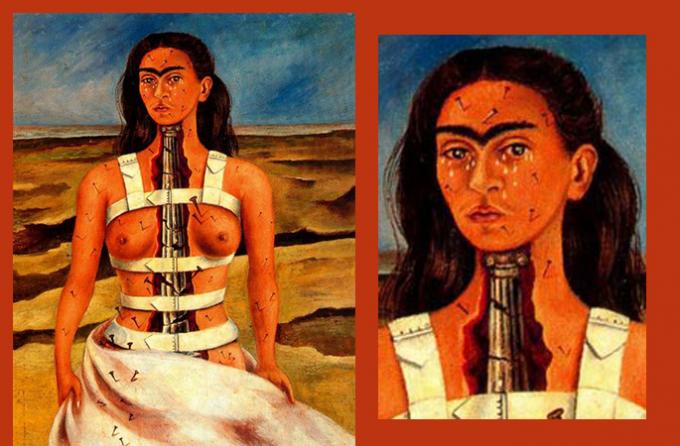
Wounded Deer (1946)

Live Life (1954)

Blue House Museum
The house where Frida lived most of her life has been turned into a museum called “Casa Azul”. The place is filled with the artist's objects, documents, photos, books and clothing.

Famous quotes by Frida Kahlo
- "Mexico, as usual, is disorganized and confused. The only thing left for him is the great beauty of the land and the Indians. Every day, the ugly part of the United States steals a piece; it's a shame, but people have to eat and it's inevitable that the big fish will eat the little ones."
- "Now I live on a painful planet, transparent as ice. It's as if I've learned it all at once, in a matter of seconds. My friends and colleagues slowly became women. I aged in moments and now everything is blunt and flat. I know there is nothing hidden; if there was i would see".
- "I'm not sick. I'm broken. But I feel happy to stay alive as long as I can paint."
- "If there is life after death, don't wait for me, because I won't."
- "I drank because I wanted to drown my sorrows, but now the damn things have learned to swim".
Frida Kahlo's voice
A recording of a radio program was discovered in 2019 in which Frida recites a text, written in 1949, describing her husband, Diego Rivera.
This is the only voice record of this important Latin American artist. A translated excerpt follows:
He is a big boy, huge, with a lovely face and a sad look. Her bulging, dark, super-intelligent and big eyes almost never stop, they are almost out of their sockets because of the swollen eyelids.

